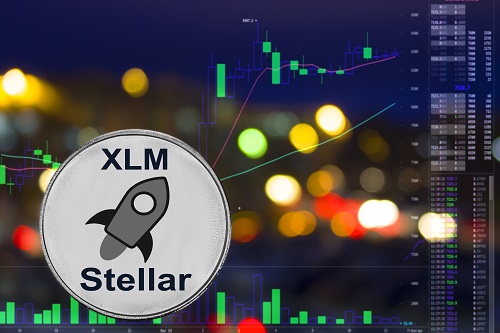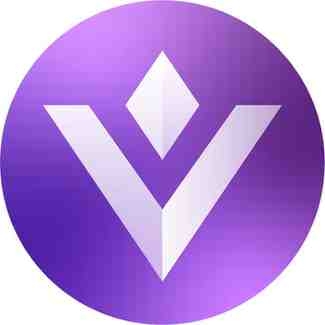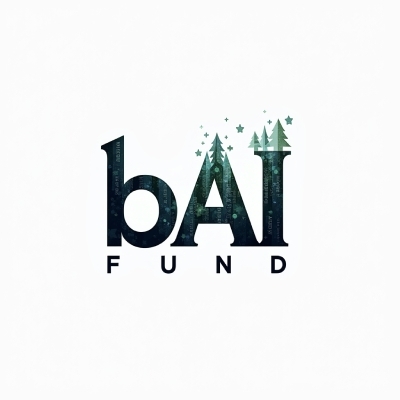
Terkait koin
Kalkulator harga
Riwayat harga
Prediksi harga
Analisis teknikal
Panduan pembelian koin
Kategori Kripto
Kalkulator profit

Harga StellarXLM
Bagaimana perasaan kamu tentang Stellar hari ini?
Harga Stellar hari ini
Berapa harga tertinggi XLM?
Berapa harga terendah XLM?
Prediksi harga Stellar
Kapan waktu yang tepat untuk membeli XLM? Haruskah saya beli atau jual XLM sekarang?
Berapa harga XLM di 2026?
Berapa harga XLM di 2031?
Riwayat harga Stellar (IDR)
 Harga terendah
Harga terendah Harga tertinggi
Harga tertinggi 
Informasi pasar Stellar
Riwayat kapitalisasi pasar Stellar
Pasar Stellar
Kepemilikan Stellar berdasarkan konsentrasi
Alamat Stellar berdasarkan waktu kepemilikan

Peringkat Stellar
Tentang Stellar (XLM)
Tentang Stellar
Stellar (XLM) berdiri sebagai platform blockchain terdesentralisasi yang dirancang untuk memproses transaksi dengan cara yang cepat, aman, dan hemat biaya. Awalnya dimulai sebagai fork dari protokol Ripple, Stellar dengan cepat berkembang menjadi otonom ventura, dengan desain dan tujuannya yang khas.
Yang mengawasi pengembangan dan promosi jaringan Stellar adalah Stellar Development Foundation dengan misi menjembatani kesenjangan antara individu, bisnis, dan lembaga keuangan di seluruh dunia, terutama bagi mereka yang kurang terlayani oleh sistem perbankan konvensional. Sebuah langkah luar biasa diambil pada Januari 2023 ketika Stellar Development Foundation mengajukan klaim sebesar $13 juta AS terhadap Genesis.
Tidak seperti banyak jaringan blockchain lainnya, Stellar menjauhkan diri dari operasi mining atau penambangan yang boros energi. Sebaliknya, ia memanfaatkan Stellar Consensus Protocol (SCP), sebuah mekanisme konsensus federasi, untuk mengotentikasi dan memvalidasi transaksi. Protokol konsensus ini meningkatkan efisiensi dan keramahan lingkungan Stellar, selaras dengan visinya untuk menyediakan layanan keuangan yang mudah diakses dan efektif bagi semua orang.
Sumber
Whitepaper: https://www.stellar.org/papers/stellar-consensus-protocol
Situs web resmi: https://www.stellar.org/
Bagaimana Cara Kerja Stellar?
- Mekanisme Konsensus: Stellar beroperasi dengan sistem perjanjian Bizantium yang disebut Stellar Consensus Protocol (SCP). Mekanisme konsensus ini memungkinkan node (validator Stellar) untuk menyetujui keabsahan transaksi dengan cara yang terdesentralisasi. Proses ini melibatkan serangkaian putaran voting hingga konsensus tercapai, memungkinkan penyelesaian transaksi yang aman dan cepat.
- Anchor dan Aset Diterbitkan: Arsitektur Stellar memungkinkan representasi berbagai aset di jaringan. Aset-aset ini dapat berupa mata uang kripto, mata uang fiat, komoditas, atau bahkan token kustom. Untuk membawa aset eksternal ke dalam jaringan Stellar, entitas yang dikenal sebagai "anchor" bertindak sebagai perantara tepercaya. Anchor memfasilitasi deposit dan penarikan aset di dalam dan di luar jaringan, memungkinkan integrasi bebas hambatan antara sistem keuangan tradisional dan blockchain Stellar.
- Exchange Terdesentralisasi (DEX): Pengguna dapat trading berbagai aset secara langsung di jaringan Stellar, berkat kemampuan exchange terdesentralisasi asli platform ini. Fitur ini meningkatkan likuiditas dan meningkatkan efisiensi konversi aset, sehingga memudahkan pengguna untuk menukar satu aset dengan aset lainnya tanpa bergantung pada exchange eksternal.
- Kontrak Pintar dan Token Kustom: Walaupun Stellar tidak dikenal dengan kontrak pintar yang kompleks seperti Ethereum, Stellar menawarkan fitur-fitur sederhana yang dapat diprogram yang dapat digunakan untuk menjalankan operasi tertentu secara otomatis. Selain itu, Stellar mendukung pembuatan token kustom, yang memungkinkan pengguna untuk menerbitkan aset digital mereka sendiri di jaringan. Token kustom ini dapat mewakili apa saja, mulai dari poin loyalitas hingga sekuritas, memperluas utilitas platform dan potensi kegunaan.
Apa Itu Token XLM?
Mata uang kripto asli di jaringan Stellar disebut XLM (Stellar Lumens). XLM memainkan peran penting dalam ekosistem Stellar, berfungsi sebagai mata uang jembatan untuk memfasilitasi pertukaran aset dan transaksi lintas batas.
Fungsi Utama XLM:
- Biaya Transaksi: XLM digunakan untuk membayar biaya transaksi di jaringan Stellar. Ketika pengguna melakukan operasi seperti mengirim pembayaran atau perdagangan aset, sejumlah kecil XLM diburning (dihapus dari peredaran) sebagai biaya untuk menggunakan jaringan.
- Tindakan Anti-Spam: Biaya transaksi nominal di XLM berfungsi sebagai mekanisme anti-spam untuk mencegah jaringan dibanjiri transaksi yang tidak perlu atau berbahaya.
- Bridge Likuiditas: XLM bertindak sebagai bridge likuiditas antara berbagai aset di jaringan Stellar. Saat perdagangan satu aset dengan aset lainnya, XLM dapat berfungsi sebagai perantara, membuat konversi aset menjadi bebas hambatan.
- Insentif Komunitas Stellar: Pada masa-masa awal Stellar, XLM didistribusikan melalui berbagai program dan kemitraan untuk membangun jaringan dan menciptakan komunitas pengguna dan pengembang yang berkembang.
Apa yang Menentukan Harga Stellar?
Harga Stellar (XLM) hari ini dipengaruhi oleh segudang faktor internal dan eksternal yang berinteraksi dengan cara yang kompleks. Salah satu faktor internal utama adalah utilitas Stellar dalam memfasilitasi transaksi lintas batas berbiaya rendah. Jaringan Stellar menggunakan mata uang digital aslinya, Lumens (XLM), untuk bertindak sebagai jembatan pertukaran mata uang yang cepat dan efisien, sehingga mempengaruhi nilai Stellar saat ini.
Berkat Stellar Consensus Protocol (SCP), jaringan ini menawarkan kecepatan tinggi dan biaya transaksi yang rendah, yang membedakannya dengan mata uang kripto lainnya seperti Bitcoin dan Ethereum. Pada September 2023, kapitalisasi pasar Stellar saat ini sekitar $3,3 miliar. Hal ini mencerminkan utilitas dan adopsinya, faktor-faktor yang pada gilirannya berdampak langsung pada nilai koin Stellar dan riwayat harganya.
Faktor eksternal juga memainkan peran penting dalam menentukan harga mata uang kripto Stellar. Sentimen pasar, yang sering kali diukur melalui analisis harga Stellar dan model prediksi harga Stellar, dapat mendorong fluktuasi harga perdagangan Stellar. Kemitraan dengan institusi keuangan dan organisasi lain dapat secara signifikan mempengaruhi perkiraan harga Stellar XLM. Sebagai contoh, kolaborasi Stellar dengan Kementerian Transformasi Digital Ukraina untuk mata uang digital bank sentral (CBDC) telah membuat gebrakan di industri ini.
Selain itu, tren makroekonomi yang memengaruhi pasar mata uang kripto secara luas—seperti berita regulasi atau perubahan harga yang signifikan dalam mata uang kripto lain seperti Bitcoin—dapat memengaruhi harga real-time Stellar. Investor sering berkonsultasi dengan grafik harga Stellar dan riwayat harga Stellar untuk mengambil keputusan. Mereka mengawasi tren harga Stellar dan model prediksi harga Stellar 2023 untuk mengukur kinerja Stellar di masa depan.
Kesimpulan
Kesimpulannya, platform blockchain terdesentralisasi Stellar, yang digerakkan oleh Protokol Konsensus Stellar, memastikan transaksi yang cepat dan terjangkau tanpa mining yang boros energi. Dengan fokus pada inklusi keuangan dan XLM sebagai mata uang penghubung, Stellar memiliki potensi untuk merevolusi lanskap keuangan, mendorong aksesibilitas dan likuiditas global.
Penting untuk dicatat bahwa seperti mata uang kripto lainnya, Stellar memiliki risiko tersendiri dan selalu bijaksana untuk melakukan riset sendiri dan berhati-hati saat berinvestasi.
XLM ke mata uang lokal
- 1
- 2
- 3
- 4
- 5
Cara Membeli Stellar(XLM)

Buat Akun Bitget Gratis Kamu

Verifikasi Akun Kamu

Konversi Stellar ke XLM
Trading futures perpetual XLM
Setelah berhasil mendaftar di Bitget dan membeli USDT atau token XLM, kamu bisa mulai trading derivatif, termasuk perdagangan futures dan margin XLM untuk meningkatkan penghasilanmu.
Harga XLM saat ini adalah Rp4,353.26, dengan perubahan harga 24 jam sebesar -1.85%. Trader dapat meraih profit dengan mengambil posisi long atau short pada futures XLM.
Bergabunglah di copy trading XLM dengan mengikuti elite trader.
Berita Stellar





Listing terbaru di Bitget
Beli lebih banyak
FAQ
Apa perbedaan Stellar dengan platform blockchain lainnya seperti Bitcoin dan Ethereum?
Apa yang dimaksud dengan Stellar Lumens (XLM)?
Berapa banyak Stellar Lumens (XLM) yang beredar?
Apakah Stellar Lumens (XLM) dapat di-Stake atau Ditambang?
Bisakah harga Stellar Lumens (XLM) mencapai nilai US$1?
Seberapa amankah jaringan Stellar?
Berapa harga Stellar saat ini?
Berapa volume perdagangan 24 jam dari Stellar?
Berapa harga tertinggi sepanjang masa (ATH) dari Stellar?
Bisakah saya membeli Stellar di Bitget?
Apakah saya bisa mendapatkan penghasilan tetap dari berinvestasi di Stellar?
Di mana saya bisa membeli Stellar dengan biaya terendah?
Di mana saya dapat membeli Stellar (XLM)?
Bagian video — verifikasi cepat, trading cepat

Sumber XLM
Tag:
Insight Bitget





Aset terkait
































Data Sosial Stellar
Dalam 24 jam terakhir, skor sentimen media sosial untuk Stellar adalah 3.5, dan sentimen media sosial terhadap tren harga Stellar adalah Bullish. Skor media sosial Stellar secara keseluruhan adalah 19,089, yang berada di peringkat 165 di antara semua mata uang kripto.
Menurut LunarCrush, dalam 24 jam terakhir, mata uang kripto disebutkan di media sosial sebanyak 1,058,120 kali, di mana Stellar disebutkan dengan rasio frekuensi 0.03%, berada di peringkat 93 di antara semua mata uang kripto.
Dalam 24 jam terakhir, terdapat total 894 pengguna unik yang membahas Stellar, dengan total penyebutan Stellar sebanyak 309. Namun, dibandingkan dengan periode 24 jam sebelumnya, jumlah pengguna unik peningkatan sebesar 8%, dan jumlah total penyebutan penurunan sebesar 31%.
Di Twitter, ada total 13 cuitan yang menyebutkan Stellar dalam 24 jam terakhir. Di antaranya, 38% bullish terhadap Stellar, 0% bearish terhadap Stellar, dan 62% netral terhadap Stellar.
Di Reddit, terdapat 3 postingan yang menyebutkan Stellar dalam 24 jam terakhir. Dibandingkan dengan periode 24 jam sebelumnya, jumlah penyebutan penurunan sebesar 0% .
Semua tinjauan sosial
3.5